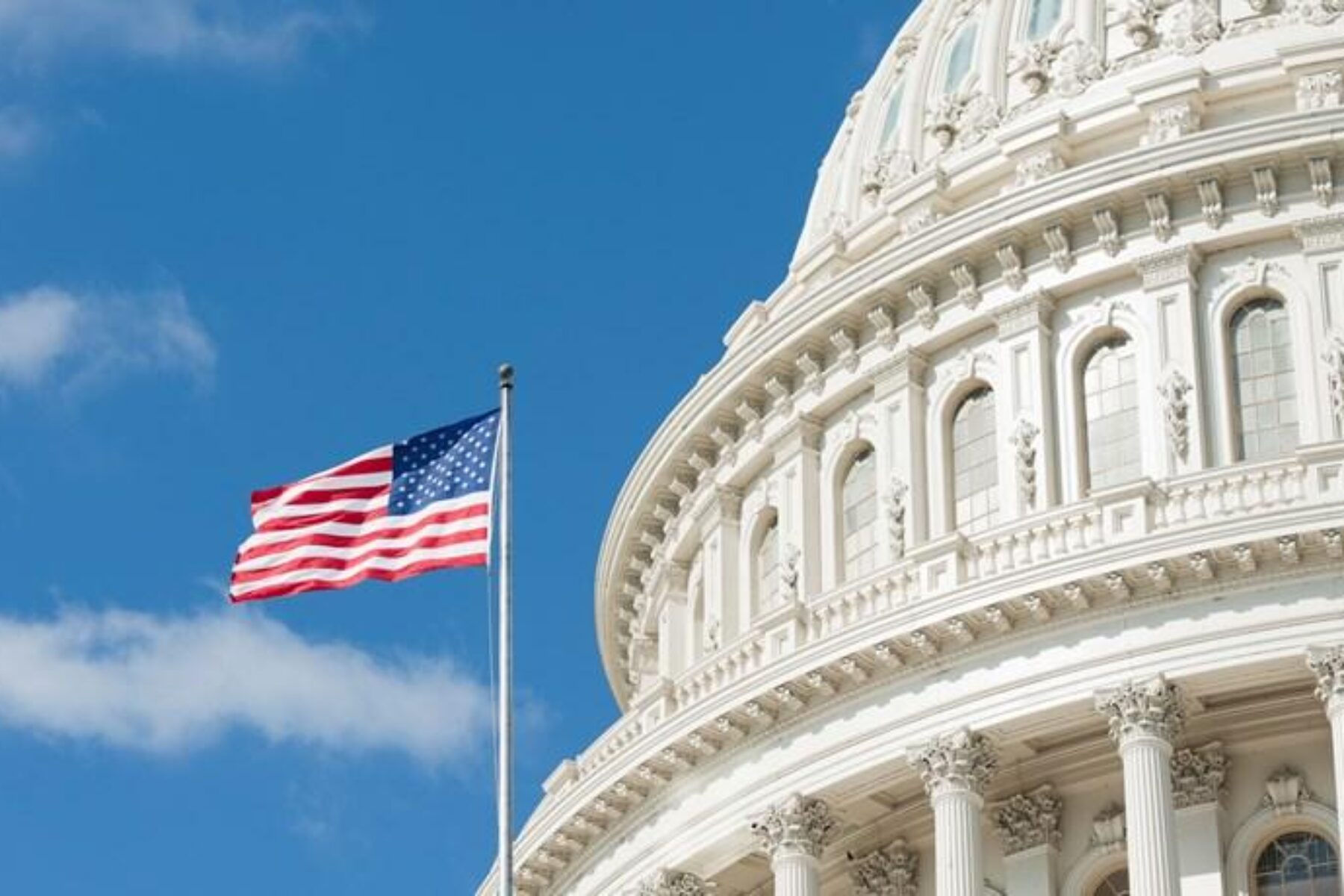Biden Infrastructure Goals Would Be Achieved With More Strategic Investment in Walking and Biking

On Wednesday, March 31, the Biden Administration unveiled The American Jobs Plan, outlining a series of strategies for investing in America’s infrastructure, including transportation. Set to address job creation, equity and reducing the impacts of climate change, the plan aligns well with the long-known benefits of trails and active transportation. However, in its current form, the plan misses an important opportunity to strategically leverage investments to increase walking and biking—an essential component of any strategy to achieve the goals outlined by the administration.
Investments that connect America’s active transportation networks would further job, equity and climate goals more quickly and more affordably than many of the plan’s featured measures. The plan includes critical funding for bicycle and pedestrian safety and improved street design, as well as promising opportunities to reconnect communities historically divided by inequitable transportation investments. What the plan is missing, however, is a focus on creating low-stress walking and biking routes, like trail and active transportation networks, that are needed to increase rates of walking and biking, which is fundamental to the goals laid out by the administration.
Below is a breakdown of the plan’s high points—and where it could go further.
Here’s the Good News
The American Jobs Plan would increase funding for trails, walking and biking, and address related safety, equity and environmental challenges.
A proposed $5 billion boost in Transportation Alternatives—the nation’s largest source of active transportation funding—would bring far greater opportunities for states and localities to advance trail and other active transportation projects.
A newly proposed “Safe Streets for All” program would fund state and local plans that incorporate Vision Zero goals to reduce crashes and fatalities for all road users, especially vulnerable pedestrians and cyclists. The proposal includes $20 billion for the program to address the increasing rate of pedestrian and bicyclist fatalities and injuries—an impact disproportionately affecting Black and Brown communities. Complementing this proposal is a commitment by the administration to leverage routine road work as an opportunity to modernize streets to accommodate all users.
Another new $20 billion program is designed to redress the detrimental racial and economic impacts of historical transportation investments, including the development of the interstate highway system that razed once vital—and disproportionately Black and Brown—urban neighborhoods. The funding would be used to reconnect neighborhoods and ensure that new infrastructure projects address racial and environmental justice by promoting increased opportunity and affordable access. Of note: active transportation infrastructure, including trails, would contribute significantly to efforts to weave communities together that had been previously divided by highways.
The plan also calls for an additional $50 billion for climate-resilient infrastructure, which could include trails with stormwater management features.
What’s Missing in the Administration’s Infrastructure Plan?
While the current plan is ambitious—proposing to spend about $600 billion over five years on transportation investments to achieve its goals—it misses an important opportunity to optimally invest in walking and biking infrastructure. The plan rightly aims to improve streets, yet it fails to directly commit resources to creating active transportation infrastructure that is entirely separated from vehicle traffic—the safest routes for people on foot, bike or wheelchair to get to routine destinations.
RTC is calling on Congress and the Biden Administration to incorporate trails and other traffic-separated facilities into these plans. Streets built for cars should be made more accommodating for people—but we need to go further, designing complete, connected active transportation routes that serve our most vulnerable residents so they can get where they are going safely and comfortably by foot, bike or wheelchair.
This will require intention and strategic focus to ensure that federal investments are used to connect America’s active transportation infrastructure. By doing so, we can accelerate progress in meeting the growing demand for safe places to walk, bike and be active outside, leveraging the nation’s 40,000 miles of multiuse trails and growing number of regional trail networks to create an active transportation system that work for people of all ages and abilities. Nationwide, dozens of communities have plans to increase regional active transportation connectivity—with projected costs exceeding $7 billion. There is no shortage of vision to create safe walking and biking routes across the country, rather a shortage of dedicated, focused funding.
Recent research shows the powerful ways that investments in active transportation can benefit communities—creating more jobs per dollar than any other type of infrastructure (because the work is more labor intensive). Shifting short trips currently made by car to walking and biking trips would have sizable impacts on our economy and our climate.
RTC’s 2019 study, “Active Transportation Transforms America,” attributes $34.1 billion annually in economic activity to active transportation, with the potential to grow to $138.5 billion annually as network connectivity improves. The study specifically found that building out the country’s active transportation network could:
- Take the value of fuel savings from $3.3 billion annually to as much as $22 billion annually
- Grow the amount of CO2 saved annually by as much as 13 million to 54 million metric tons
- Take the total local spending impact of the nation’s trails from $10.6 billion annually to as much as $21 billion annually.
- Grow health cost savings (from increased physical activity due to active transportation) from its current $20 billion annually to nearly $92 billion annually
RTC envisions a pathway for trails and active transportation to be incorporated into the administration’s plans as a powerful tool for connecting communities and centering human-powered mobility to achieve the goals they’ve laid out and meet the growing demand for walking and bicycling infrastructure nationwide.
Advancing a Visionary Transportation Reauthorization Bill
Right now, Congress is developing a proposal to reauthorize the federal surface transportation bill, which is set to expire in September. RTC has been working closely with members of the House and Senate to ensure that this bill includes key investments in active transportation. Our plan is built upon a trio of bills designed to grow funding for trails, walking and biking, while providing the necessary policy reforms to strategically focus those investments in ways that more quickly create safe, convenient walking and biking routes for everyone.
Fundamental to RTC’s federal vision is the Connecting America’s Active Transportation System Act, which creates the Active Transportation Connectivity Grant program intended to accelerate the work to build and connect active transportation networks in communities across the country. Included in in the House infrastructure bill passed last summer (H.R.2), the proposal already has the support of hundreds of national, state and local organizations representing biking and walking, health, transportation reform, environment, disability rights, and planning, as well as elected officials. A bipartisan group of Senators reintroduced the bill (S.684) earlier this year, and our champions in the House will soon reintroduce their bill as well.
Two additional bipartisan bills would increase dedicated funding for trails and active transportation—the Transportation Alternatives Enhancements Act (H.R.463, S.614) and the Recreational Trails Full Funding Act (H.R.1864). These two bills would increase funding for Transportation Alternatives and the Recreational Trails Program, the two existing programs that together make up the largest federal sources of investment for trails, walking and bicycling.
This trio of bills would be a strong complement to President Biden’s American Jobs Plan as part of the forthcoming reauthorization bill. As Secretary Buttigieg often says, this is a once-in-a-generation opportunity to create transportation policy reform. It is a significant, critically important opportunity to ensure that trails, walking and biking are accessible transportation options for all.
Want to learn more about how you can support this visionary funding package?
Visit our Trails Transform website for resources to support your advocacy and make the case for trail and active transportation networks.

Donate
Everyone deserves access to safe ways to walk, bike, and be active outdoors.
